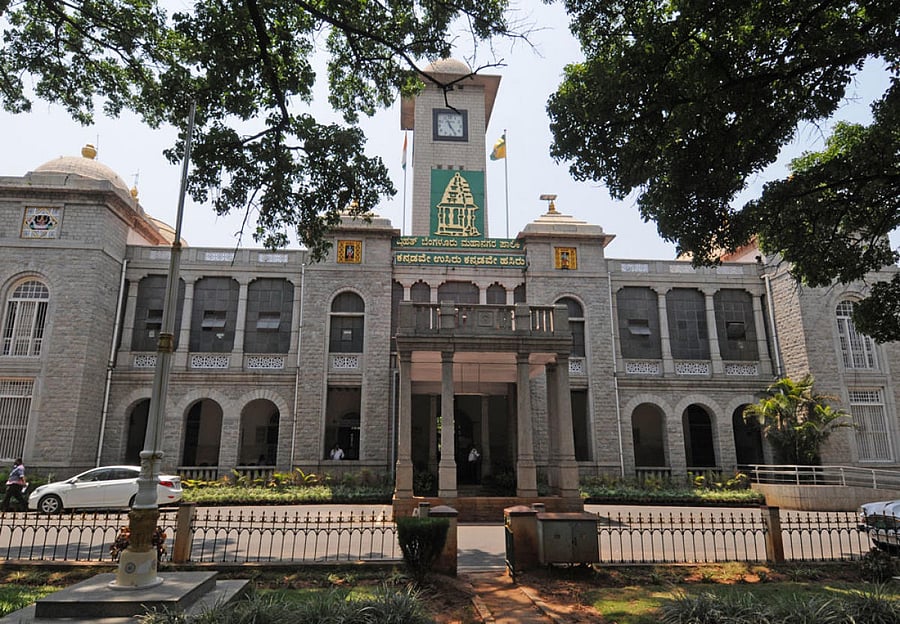
Propelled by an unprecedented 44.6% rise in population between 2001 and 2011, Bengaluru is today hyper-packed with 1.3 crore people. Can a 198-ward city corporation truly represent this huge mass with a million daily demands? Is the ward delimitation exercise, now underway, the final solution?
To understand just why the State and the Bruhath Bengaluru Mahanagara Palike (BBMP) are on a ward-restructuring drive, the city’s growth pattern is critical. The outer wards have grown by a whopping 116%, a breakneck speed when compared to the slow pace of the inner wards’ growth: A mere 17%.
So, the Palike’s plan is this: Redraw boundaries so that there are more outer wards and lesser inner wards. This way, the population per ward could be in the range of 37,000 to 47,000. The average population size of each ward would then be around 42,000.
Ward average: 42,000
The Palike assumes that this 1:42,000 corporator-citizens ratio will boost people’s representation. The urgency to accomplish this in quick time is clear: BBMP elections are due in August 2020, and the Supreme Court and Election Commission guidelines mandate this.
But there is a flaw in this approach, as urbanist V Ravichandar points out. The Palike has underestimated the current ward population by relying on the 2011 census. He explains, “The 42,000 / ward figure has been arrived at by dividing 86 lakh (2011 city population) by 198. But in reality, by 2020, the population per ward will be closer to 70-70,000.”
In the years since 2011, the city has been growing at 3-6% in wards outside the Outer Ring Road (ORR) although those within the ORR have seen a maximum growth of 2%. Some core area, inner city wards have even recorded negative growth.
Hi-growth post 2011
The 2011 census showed that 21 wards had a population less than 30,000, while 43 wards had over 50,000 people each. In the largest ward, Horamavu, the count was 95,368 people. But in the years since the last census, this number has gone well past 1.2 lakh.
Ideally, says Ravichandar, wards outside ORR should have started with a smaller base of 30,000. “What in 2011 looks 30,000 will be closer to 50,000 by 2020. You would have had more balanced wards then. But with the current calculation, you will have imbalance all over again. This is an opportunity missed.”
Development incentive
Is there a development incentive to this delimitation exercise? Currently, the Palike grants Rs 2 crore for the inner, core wards and Rs 3 crore for each outer ward. More outer wards imply more grants for development. “More wards are a good thing. There will be more corporator accountability in smaller wards,” notes Srinivas Alavalli from Citizens for Bengaluru (CfB).
But by smaller wards, he means populations in the range of 15-20,000. With only 198 wards, this is clearly impossible to achieve. The Karnataka Municipal Corporation Act of 1976 mandates that no corporation can exceed 200 wards. “Either amend this Act or circumvent it by forming multiple corporations,” suggests Alavalli.
Restructure plan
The B S Patil BBMP Restructuring Committee had recommended splitting BBMP for precisely this reason. Multiple corporations could then mean a city with up to 400 wards, a truly manageable corporator: citizen ratio. As Alavalli put it, “this will be an evolution of urban governance.”
But the state government has not shown much interest in the panel’s recommendation to split the Palike into five corporations. Deputy Chief Minister G Parameshwara, who holds the Bengaluru Development portfolio, had said it would create revenue imbalance.
His contention was this: The corporation covering the IT hub of Whitefield will generate much higher taxes compared to the ones with fewer IT and commercial setups. Development will be skewed. The bottomline was revenue, not greater representation for the people. The current ward delimitation exercise implies the recommendation is buried for good.
Ward reservation
Beyond the potential for ward population imbalance, CfB’s Tara Krishnaswamy draws attention to another problem: The identity of reserved wards will be shrouded in secrecy. In the past too, such redrawing of boundaries was not followed by a transparent declaration of reserved wards.
The opaque nature of this process invariably benefits the ruling party. She explains, “The reservation list is announced only at the last moment before the elections. None but the ruling party will be able to choose and prepare candidates in advance.”
It is hoped that this time, the process would be more fair. “If you want to bring in fresh faces, you need to know in advance which ward is reserved for women general, SC, ST or OBC,” she says. Transparency will aid selection of well qualified candidates and in the process boost grassroots democracy through better local governance.
Public consultation
The first signs, if at all, of the government’s intention could be visible within the next three months. The BBMP Commissioner, N Manjunath Prasad has already indicated that the entire delimitation exercise might be completed by October 2019.
The Urban Development Department is expected to publish the draft delimitation order, after which citizens could raise their objections or give suggestions for a month. The Palike topbrass assures that the final notification with reservation will be issued only after public inputs.
Twelve summers back, when the erstwhile Bangalore Mahanagara Palike (BMP) morphed into the Bruhath Bengaluru Mahanagara Palike (BBMP), the public had little say. The result is there for all to see. But were lessons learnt from the ‘spectacular failure’ of that 2007 exercise? That would depend on how the new delimitation exercise fares on the ground.
